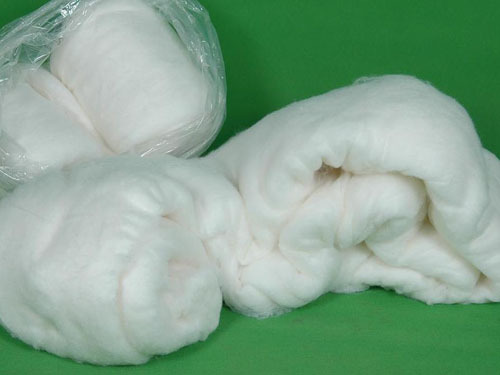(1) Tussah silk There are many varieties of Tussah silkworm in China. Currently, there are two types of larvae, one of which are currently released and one of two kinds of larvae. The content of sericin in tussah silk is about 12%-15% lower than that of mulberry silk, and the cross section of tussah silk is blunt. It is basically the same as mulberry silk, but it is more flat. The major diameter is about 65 μm, and the minor diameter is about 12 μm. The closer to the inside of the pupa, the greater the difference between the long and short diameters and the flatter the shape. The monofilament is composed of a collection of many fine fibers. There are certain gaps between the fibers, and the gaps at the center are larger. The fibers near the surface are thinner, which is favorable for ventilation and moisture absorption. Tussah silk contains trace amounts of tannins that chemically bond to sericin or silkworms. Silkworms also contain pigments inside and outside, which are very difficult to remove during processing. Stitchbond CHAOZHOU TEAMWAY TEXTILE CO., LTD , https://www.teamwaychina.com
(2) In the daily life of silkworms, people often describe rare and precious objects as "things are rare and valuable." Using this idiom to describe Tiansi silk is the most appropriate. The silkworm is rare and expensive, and its price per kilogram in the international market is as high as 3,000 to 5,000 US dollars, which is nearly 100 times higher than that of mulberry silk and tussah silk. The economic benefits are astounding. The larvae are also known as "Japanese silkworms" and "Morindae". It is a kind of insect that lives in the natural oak forest, and it is a metamorphosis insect that is completely metamorphosis. It is mainly produced in China, Japan, North Korea and Russia's Ussuri. Silkworm silk is a kind of wild silk that can keep natural green without dyeing. Its unique pale green jewel-like luster and high-strength tensile strength and toughness are often praised by people as "fiber diamonds", "green gold" and "fiber queens".
(3) Natural Color Cocoon With the development of colored cotton, natural colored cocoons have also emerged. As early as the early 1950s, Guangdong Province used to feed too many cocoons that were yellow, but they were eliminated due to their thin layer, coarse silk, and low quality. The research and development of natural color silk products is the first time at home and abroad, and its environmental advantages determine that it has a good market prospect. The Sericulture Research Institute of Anhui Academy of Agricultural Sciences and the Provincial Silk Company jointly tackled the problem. The technology for the development of silkworm natural color cocoons has also been successful recently. They use artificial feed or mulberry leaves to add processed pigment feed to the silkworm to make silk cocoons colorful.
(4) Ricinus communis silkworm silkworms have pods on both ends of a tapering cymbal, shaped like a jujube kernel, with a central swelling, a broad narrow width on both sides of the waist, some with an irregular triangle, a closed tail, and a head Out hole. The silkworm is most suitable for growing in hot, humid and rainy summer. It is native to the Assam forest in northeastern India and is also known as the silkworm of India. The silk coat of the silkworm silkworm is thick and numerous.
Silk clothing care is not necessary dry cleaning, you can wash your hands. I do not know if it is light. If 100% mulberry silk is discolored due to sweat, soak the wax gourd or wash rice water.